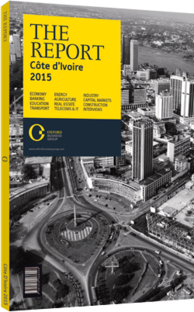Beyon Luc-Adolphe Tiao, Former Prime Minister of Burkina Faso: Interview

Interview: Beyon Luc-Adolphe Tiao
How can the common external tariff (CET) contribute to greater economic integration?
BEYON LUC-ADOLPHE TIAO: On October 25, 2013 in Dakar, Senegal, ECOWAS finalised the structure of the ECOWAS CET. The CET will reinforce economic integration and promote economic competitiveness while increasing intra-regional trade. The desired effect is to lower prices so as to increase the population’s purchasing power. Similarly, the decline in prices for raw materials and capital goods, due to the new tariff structure, should lead to an improvement in companies’ competitiveness. The harmonisation of the legal and fiscal environment also aims to create a friendlier business environment. By introducing simple and transparent procedures, we seek to have a more efficient administrative structure.
The establishment of a Customs union between member states has clear benefits. Indeed, for small and medium-sized economies, like those in West Africa, accessing a wider market will allow them to make profitable investments. Increasing demand coupled with greater supply will lead to lower costs for production and improved profitability. Companies can benefit from economies of scale and will have a growing need for labour, capital and raw materials. These spillover effects will lead to an increase in income throughout the regional economy. The establishment of a single market also aims for the unimpeded movement of people, goods, services and capital. Firms established in one member state can trade freely in all member states.
How can foreign investment contribute to improving the regional transport network?
TIAO: Financing mechanisms such as public-private partnerships (PPPs) and foreign direct investment (FDI) can contribute significantly to the improvement of regional transport. For instance, the concession for the Ivoiro-Burkinabé line was granted to Société Internationale des Transport Africain par Rail (Sitarail) in 1994. Bolloré Africa Logistics subsidiary Société Anonyme de Gérance et d’Armement is a majority shareholder in Sitarail. This concession is a form of PPP, and Sitarail is expected to maintain the line, and ensure the expansion and development of new infrastructure. As far as the road network is concerned, Burkina Faso and Côte d'Ivoire are pioneers in the region with the construction of the Yamoussoukro-Ouagadougou highway. Indeed, the Burkinabé section is already attracting FDI. We hope to see more of these kinds of projects. Additionally, the construction of an airport in Ouagadougou is based on a PPP agreement, with significant resources expected from the international private sector.
To what extent is the Port of Abidjan facilitating regional commodities exports?
TIAO: The Port of Abidjan is connected to the transnational railway between Burkina Faso and Côte d’Ivoire. This is an advantage for the export of Burkinabé products and commodities, especially cotton. Rail is deemed to be advantageous for transporting large quantities as it offers lower unit costs. With direct access to the Port of Abidjan, this rail line is a means to unlocking potential in the hinterland. It is necessary to improve and extend rail infrastructure in order to better connect our countries within the sub-region. Studies are currently being carried for the construction of a loop line between Abidjan, Ouagadougou, Niamey, Dori, Parakou, Cotonou and Lomé.
What are the challenges faced by Burkina Faso in terms of electricity supply?
TIAO: The Burkinabé electricity sector faces three major challenges: availability, cost and network coverage. To overcome those challenges, the government has decided to rely on the development of connections with neighbouring countries that have cheaper energy resources. Our country imports around 70 MW from Côte d’Ivoire at a lower cost than local thermal generation. Further work needs to be done to interconnect regional grids to reduce transmission and distribution losses, as well as to offer more affordable electricity.
You have reached the limit of premium articles you can view for free.
Choose from the options below to purchase print or digital editions of our Reports. You can also purchase a website subscription giving you unlimited access to all of our Reports online for 12 months.
If you have already purchased this Report or have a website subscription, please login to continue.

